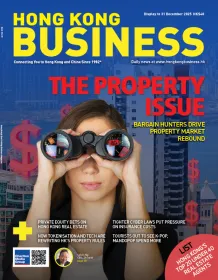Marketing strategies in Hong Kong’s new retail landscape: online, offline, or both?
By Lawrence ChiaHong Kong is world famous for being a ‘shoppers’ paradise’, thanks to its compact geography, easy access to shopping malls, and of course its incredible variety of goods available at different price points.
Despite the recent reports of sluggish retail performance and changing visitor spending patterns, the steady growth in the number of tourists who come to Hong Kong to shop for basic necessities, high-end luxury items, and the millions of products in between is proof of Hong Kong’s enduring power to attract shoppers from around the world.
This new market growth has inevitably led to changes in Hong Kong’s retail landscape, with malls becoming crowded with shoppers, product mixes changing, and rental rates skyrocketing – meaning that in many of the city’s malls, only global brands and large chain stores are able to maintain a presence.
The result of these various changes has meant that many local Hong Kong consumers, who traditionally enjoy a more leisurely style of shopping – browsing a wide variety of shops with their families, for example – are no longer having their retail ‘needs’ met by today’s offline shopping experience.
An evolving landscape
At the same time, thanks to ever-growing connectivity, Hong Kong is experiencing a growth in online purchasing, through e-commerce and m-commerce channels, or the new business model: O2O – Online to Offline commerce.
The ‘e- and m-‘ channels allow consumers to enjoy particular elements of the retail experience – browsing numerous brands and products in a non-crowded environment for example; while the O2O model usually provides information, services, booking discounts and pushes messages to Internet users.
In return, these people can be converted into customers of the company’s offline business partners. In China, the O2O model has been highly successful through platforms like Taobao and Alibaba; and has taken Hong Kong by storm in the form of Groupon.
Traditionally, marketers in Hong Kong have not ascribed much value to online platforms due to the unique geography and the perception that ‘no one in Hong Kong is more than 20 minutes away from a mall’. But the new reality is different: Groupon has been a massive success in Hong Kong, and many retailers have been happy to use Groupon to generate awareness and non-peak customer traffic.
Making the most out of the shift
So what should today’s retailers and marketers do? Essentially, it is important to pay close attention to these shifts in the online world, which are being driven by offline changes.
Customers today are highly empowered: they have access to a world of information and more choices than ever before. As a result, their expectations are higher than ever; and increasingly, these expectations are not being met by the physical retail experience.
For example, for many years, shopping malls have used festive themes and decorations or celebrity fashion and music shows to boost traffic. While eye-catching, these tactical events are only a short-term strategy and are no longer reliable crowd pullers.
Today, smart retailers are looking at the long term, big picture retail experience for the customer: from the ambience of a physical shop, to the look and feel of a website and all the hardware and software that lies between – all touch points are now crucial parts of the whole customer experience.
To realise their goals, brand strategists have a vast range of on- and offline communications channels and different activation platforms at their disposal. In some ways, this is daunting – which platform to use at which point? When to use social media and when to use ATL? – but it also opens up incredible possibilities.
Information is key
If you are a marketer or retailer and are looking for a way forward in this changing landscape, remember this: information is key. To optimise the customer experience in this new environment, brands need to put the customer at the center of everything they do, and ensure that they can gather as much feedback and as many metrics as practical across all possible touch points.
Instead of concentrating efforts on one or two areas of the customer experience, this approach allows a holistic integrated marketing strategy to be developed across all touch points and platforms that really speaks to your customers, wherever they may be from.
If your company knows what your customers like and how they like it, using an integrated marketing strategy means you can continue to deliver a great product and a great experience, whether that experience is online, offline, or a blend of the two.




















 Advertise
Advertise






